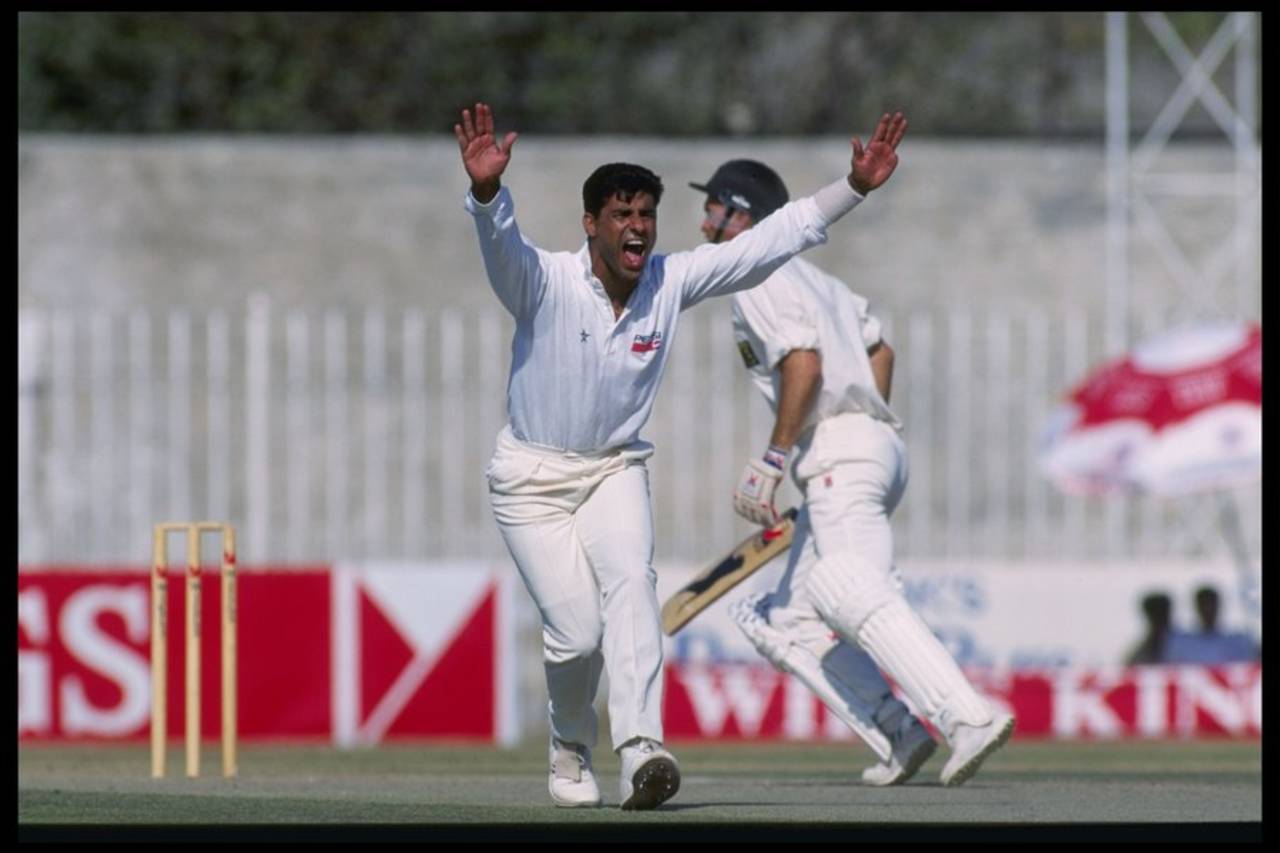If Don Bradman is the best batsman in Test history,
Sydney Barnes, it is frequently argued, is the best bowler. In 27 Tests, Barnes took 189 wickets at 16.43, one every 41.6 balls. Barnes' claim is not as strong as Bradman's, but until 1990, Barnes was unmatched by any other bowler. He has the highest rating for a bowler in the ICC's ratings for Test bowlers, just as Bradman has the highest rating for batsmen. Therefore, I propose a Barnes standard for Test bowlers to complement the
Bradman standard for Test batsmen.
The most successful bowler is one who takes the most wickets, while conceding the fewest runs, in the fewest deliveries. Put another way, the most successful bowler takes the most wickets, most cheaply and most frequently. Using such a rule, we get a Barnes standard measure: wickets taken divided by the product of bowling average and strike rate. Barnes' measure is 0.276 over the length of his career.
Among bowlers with a career haul of at least 100 Test wickets, only
George Lohmann, a 19th century Englishman, and
Dale Steyn have strike rates better than Barnes. Steyn's wickets cost about six runs more than each of Barnes' did. No bowler, not even Lohmann, has matched Barnes' average of seven wickets per Test.
It turns out that only one player in Test history has had a 27-match stretch - the length of Barnes' Test career - in which he achieved a higher Barnes standard measure. In
27 consecutive Tests between 1990 and 1994,
Waqar Younis took 177 wickets, at the rate of one every 33 deliveries. This remains the single-most lethal wicket-devouring span over 27 consecutive Tests. Barnes, over the entirety of his Test career, produced a record comparable to Waqar's between 1990 and 1994.
Bowling in strong line-ups is not necessarily a drawback, since the Barnes standard measures the frequency and speed of wicket-taking in Tests. Malcolm Marshall was at his peak between 1984 and 1988 while bowling in a strong bowling attack. Amazingly,
Wasim Akram's most successful period coincided with Waqar's. From 1990 to 1994, Pakistan had arguably the most lethal new-ball attack in Test history - two bowlers at their peak at the same time. Their successor, Shoaib Akhtar, also features high on the list but perhaps the most telling fact is that his best stretch of 27 Tests came over
a six-year period - between November 26, 1999 and November 29, 2005 - when Pakistan played 55 Tests. Javagal Srinath too has a similar record. His best spell of 27 Tests came in a
four-year period between November 20, 1996 and November 18, 2000, a spell in which India played 36 Tests. Playing three out of four Tests is not bad for a fast bowler, but, tragically for India, five of the nine Tests that Srinath missed in that phase were during the 1997 tour of West Indies.
Sir Richard Hadlee and Muttiah Muralitharan expectedly feature high on the list. Their dominant phases are not surprising either. Shane Warne's most successful phase was in the early 2000s. This is somewhat surprising as this was after Warne had been through a couple of rough tours of India and West Indies, and had a competitor for the legspinner's slot - Stuart MacGill.
Apart from telling us when the best bowlers in Test history were at their best, the Barnes standard also reveals when bowlers combined and peaked. With Wasim and Waqar at their best from January 12, 1990 to September 28, 1994, Pakistan won 15 of their 30 Tests and lost only six. Similarly, between 1968 and 1973, John Snow and Derek Underwood, who both peaked around the same time, led England to the top of Test heap. England beat West Indies in the West Indies, and Australia in Australia during this period. Their one major reverse was against India at home in 1971, when Bhagwath Chandrasekhar destroyed them at The Oval.
The Barnes standard record also shows peculiarities about individual bowlers.
Dennis Lillee and
Fred Trueman, both known to be genuinely quick bowlers, had their most productive phases of their Test careers after each had lost his tearaway pace to injury or age. In the early '60s, Trueman famously reduced the length of his run-up and gave up some pace for guile. Lillee suffered a serious back injury that interrupted his career, first in the early '70s and then in 1977, and remodelled his action. He was most productive between 1977 and 1981.
The fabled contest between Lillee and Viv Richards, often billed as one between the world's fastest bowler and the world's fastest batsman, probably held true in the 1975-76 series in Australia, but later on in the '70s, it was more a contest between a highly skilful fast bowler and a marauding batsman. In contrast to Lillee and Trueman, Waqar and Allan Donald were less productive once they lost some of their tearaway pace. They were still very good bowlers, just not the wicket-taking machines they had been at their respective peaks.
Finally, the standard illustrates, like few other statistics do, the weakness of India's Test bowling over the years. India's highest-placed bowler in the Barnes standard table is Anil Kumble, who places 51st. Kapil Dev, Srinath, Harbhajan Singh and Zaheer Khan all follow, between 55 and 71.

